
Shedding light on rare diseases: open data and model organisms
Why open data from model organisms is essential for rare disease research.
2023
perspectivesscience

Why open data from model organisms is essential for rare disease research.
2023
perspectivesscience

Jo McEntyre talks about data services, open data and a new era for research assessment.
LAB MATTERSPEOPLE & PERSPECTIVES2023
lab-matterspeople-perspectivesperspectives
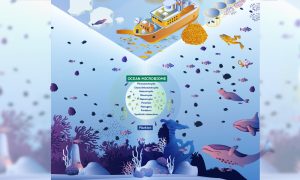
Microbial communities play essential roles in ocean ecology and planetary health. A recent publication highlights priorities for understanding and protecting ocean microbiomes.
SCIENCE & TECHNOLOGY2022
sciencescience-technology
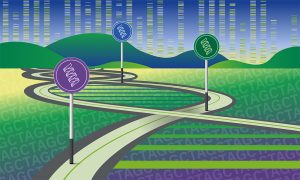
Scientists identify previously unexplored gene segments to be added to human genome databases.
SCIENCE & TECHNOLOGY2022
research-highlightssciencescience-technology

EMBO Director Fiona Watt discusses preprints, data sharing, and evaluation in light of EMBL’s new Open Science policy
LAB MATTERSPEOPLE & PERSPECTIVES2022
lab-matterspeople-perspectives
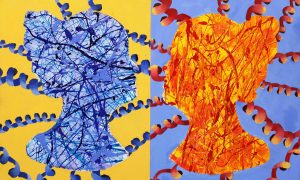
Schoolchildren create exquisite protein-inspired artworks
LAB MATTERS2020
lab-matters
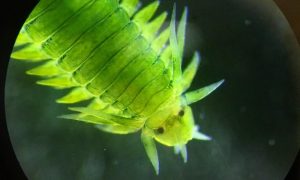
Despite restrictions, 2020 has been a busy year for the Darwin Tree of Life Project. We take a look at some of this year’s achievements and highlights.
SCIENCE & TECHNOLOGY2020
sciencescience-technology
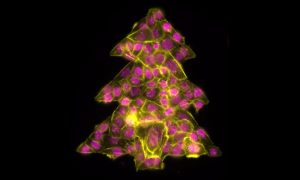
It is that time of year to get into the holiday spirit, prepare for some time at home and relax after a strange and stressful year. Even the cells in our Picture of the Week are getting into the holiday spirit, forming this colourful Christmas tree.
SCIENCE & TECHNOLOGY2020
picture-of-the-weekscience-technology
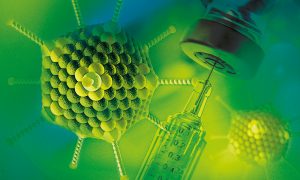
The story of a life-long friendship and a professional partnership that sowed the seeds for a ground-breaking vaccine technology.
SCIENCE & TECHNOLOGY2020
alumniscience-technology
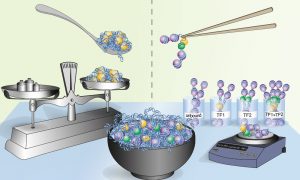
Gene activation requires the cooperative activity of multiple transcription factors. Until now, the mechanism used by these factors to coordinate their actions has been poorly understood. EMBL’s Krebs group presents a DNA footprinting method that makes it possible to determine whether…
SCIENCE & TECHNOLOGY2020
sciencescience-technology

December has seen the start of a new chapter in the collaboration that has for years marked the relationship between the European Commission (EC) and EMBL.
CONNECTIONS2020
connectionsevents
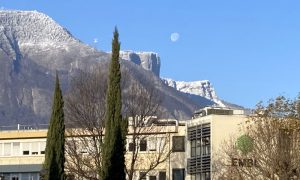
The first snowflakes have fallen on the Vercors Mountains, right behind the EMBL Grenoble building, and an almost full moon is showing up during a sunny morning.
LAB MATTERS2020
lab-matterspicture-of-the-week

Facilitated by EMBL’s Scientific Visitor Programme in 2019, Silvia Dias Almeida spent a year in the Diz-Muñoz group, helping solidify her career plans and set her up for a competitive PhD programme in biomedical imaging.
EMBL ANNOUNCEMENTSLAB MATTERS2020
embl-announcementslab-matters
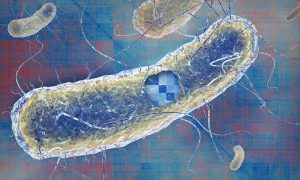
A new paper from EMBL’s Savitski team and Typas group describes their work on E. coli and how it brings a greater understanding of the way genes function and interact.
SCIENCE & TECHNOLOGY2020
sciencescience-technology

Funding by the European Research Council (ERC) will support research on the timing of developmental processes in mammals
EMBL ANNOUNCEMENTSLAB MATTERS2020
embl-announcementslab-matters

With the external scaffolding removed, another step in the construction of the EMBL Imaging Centre is complete. Now we get a first glimpse of the final look of this stunning building.
LAB MATTERS2020
lab-matterspicture-of-the-week
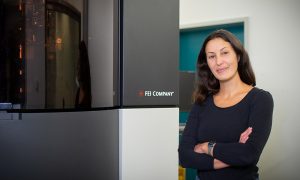
While cryo-electron tomography (cryo-ET) was first envisioned in 1968, the advances the Mahamid group are bringing to this 3D method for studying molecules directly inside cells are new, and are likely to greatly expand its use.
SCIENCE & TECHNOLOGY2020
sciencescience-technology
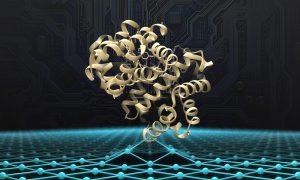
How artificial intelligence can help us solve the mysteries of the protein universe
SCIENCE & TECHNOLOGY2020
sciencescience-technology
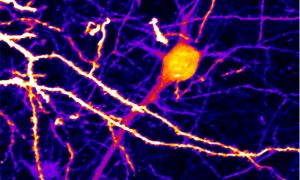
The Chan Zuckerberg Initiative has recognised four EMBL researchers with their most recent awards, showing how tech trailblazers are integral to advancing science and medicine.
EMBL ANNOUNCEMENTSLAB MATTERS2020
embl-announcementslab-matters
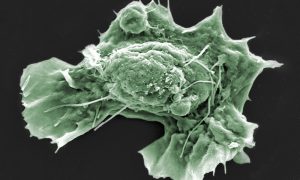
Scientists in the Diz-Muñoz group at EMBL Heidelberg are working to build understanding of the role that mechanical properties play in affecting cell behaviour – a young and rapidly developing field of study. They have developed and successfully used a highly specialised technique to manipulate…
SCIENCE & TECHNOLOGY2020
sciencescience-technology
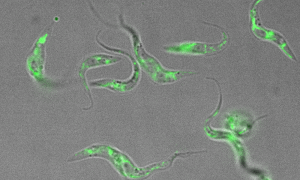
Members of the EMBL community are working to improve our understanding of the parasites that cause malaria and sleeping sickness
SCIENCE & TECHNOLOGY2020
sciencescience-technology
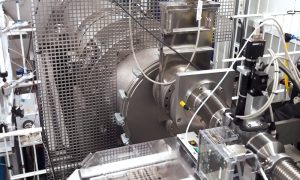
Biotechnology company BioNTech and Johannes Gutenberg University Mainz conduct collaborative research with EMBL scientists at the beamline P12 in Hamburg
SCIENCE & TECHNOLOGY2020
sciencescience-technology

Hamburg hosts one of EMBL’s six sites. The city is notorious for its windy and rainy weather. Lots of rain also means a high chance of beautiful rainbows!
LAB MATTERS2020
lab-matterspicture-of-the-week
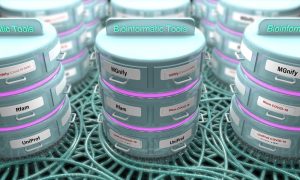
Bioinformaticians at EMBL-EBI and beyond are adapting computational tools to investigate coronavirus genomes and proteins.
SCIENCE & TECHNOLOGY2020
sciencescience-technology

At EMBL’s Science and Society conference, Ugandan campaigner Vanessa Nakate spoke about the need to take action on climate change.
PEOPLE & PERSPECTIVES2020
eventspeople-perspectives

Studying cancers means also knowing what healthy cells look like. In this case, mesenchymal stromal cells (MSCs) from healthy bone marrow are a bit ‘loopy’.
SCIENCE & TECHNOLOGY2020
picture-of-the-weekscience-technology
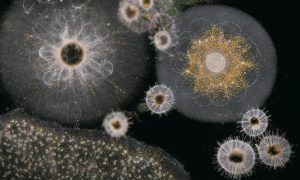
Microbiomes, plastics, and connectivity – AtlantECO aims to understand the fabric of the Atlantic Ocean.
CONNECTIONS2020
connectionsscience
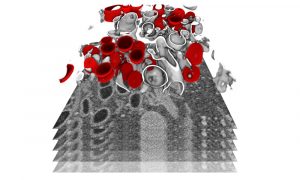
Researchers have studied SARS-CoV-2 replication in cells and obtained detailed insights into the alterations induced in infected cells. This information is essential to guide the development of urgently needed therapeutic strategies for suppressing viral replication and induced pathology.
SCIENCE & TECHNOLOGY2020
sciencescience-technology

EMBL’s Eileen Furlong, Chair of the Equality and Diversity Committee and Head of the Genome Biology Unit, responds to the recent Nature Comms paper on the potential effects of mentor–mentee relationships.
EMBL ANNOUNCEMENTSLAB MATTERS2020
embl-announcementslab-matters

EMBL Director General Edith Heard introduced EMBL’s future plans during a parliamentary event at the Paul-Löbe-Haus of the German Bundestag in Berlin. She shared examples of EMBL’s research and outlined how EMBL’s activities will develop.
CONNECTIONSLAB MATTERS2020
connectionslab-matters
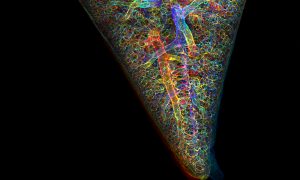
Ever-evolving technology and related budgetary, regulatory, and management challenges prompted EMBL to establish its new ARISE fellowship programme, which begins accepting applicants in December.
LAB MATTERS2020
lab-matters
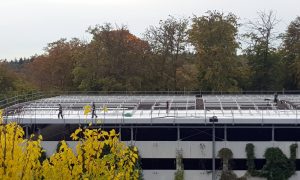
Despite the cold autumn weather, workers are busy on the rooftop of the parking garage at EMBL Heidelberg. The 2176 m² rooftop is getting transformed into a combination of a green roof and a photovoltaic plant. The planted green roof will retain rainwater, while the solar panels – installed in…
LAB MATTERS2020
lab-matterspicture-of-the-week
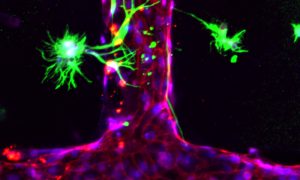
To help understand cerebral malaria the Bernabeu group has created in vitro engineered networks of human blood vessels.
SCIENCE & TECHNOLOGY2020
picture-of-the-weekscience-technology
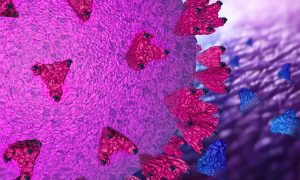
By screening hundreds of sybodies (synthetic mini-antibodies), scientists have identified one that might stop SARS-CoV-2 from infecting human cells. This work, which holds promise for treating COVID-19, was conducted by EMBL Hamburg and collaborators from the Centre for Structural Systems Biology…
SCIENCE & TECHNOLOGY2020
sciencescience-technology
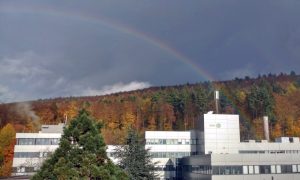
On autumn days without Heidelberg’s characteristic fog, the woods present themself in beautiful colours. You may even capture a rainbow.
SCIENCE & TECHNOLOGY2020
picture-of-the-weekscience-technology

Researchers in the Gross group at EMBL Rome have investigated the mechanism behind defensive behaviour in mice. They have identified a specific area of the brain that encodes both spatial and threat cues to drive location-specific defensive responses.
SCIENCE & TECHNOLOGY2020
sciencescience-technology
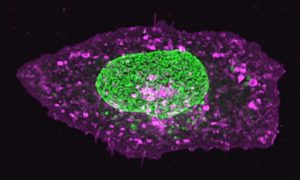
The nucleus of this cell fluoresces in bright green thanks to GFP-labelled nucleoporin proteins. EMBL scientists use engineered nucleoporins as 3D reference standards to improve super-resolution microscopy.
SCIENCE & TECHNOLOGY2020
picture-of-the-weekscience-technology

Why should researchers make artificial intelligence more transparent and how can they do it?
LAB MATTERSSCIENCE & TECHNOLOGY2020
lab-mattersscience-technology

EMBL’s Rupert Lück is engaged in developing the European Open Science Cloud (EOSC): the infrastructure that will support the future of data sharing and analysis in Europe.
CONNECTIONSLAB MATTERS2020
connectionslab-matters
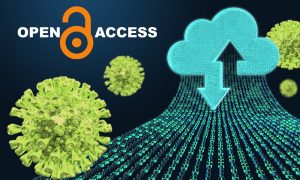
Open access data benefits millions of scientists around the world and is essential for a rapid response to the COVID-19 pandemic.
SCIENCE & TECHNOLOGY2020
sciencescience-technology

In 2012, EMBL used ecological lawn mowers to keep the grass short around the Advanced Training Centre at EMBL Heidelberg.
LAB MATTERS2020
lab-matterspicture-of-the-week

EMBL and CIML have signed a memorandum of understanding that will open up new scientific opportunities.
CONNECTIONSLAB MATTERS2020
connectionslab-matters
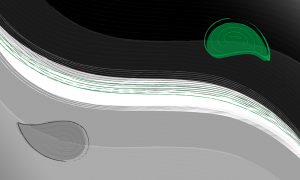
A three-day virtual conference, ‘Gender Roles and their Impact in Academia’, explored how biology, social structures, and unconscious bias shape gender roles, and discussed ways to achieve equal opportunities for men and women in academia.
LAB MATTERS2020
eventslab-matters
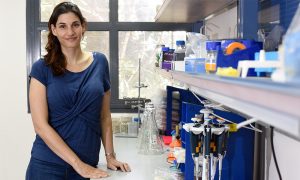
New associate group leader at EMBL Hamburg investigates the structure of functional amyloids in bacteria and in human disease
LAB MATTERSPEOPLE & PERSPECTIVES2020
lab-matterspeople-perspectives
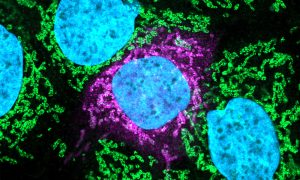
Scientists from the Beltrao Group at EMBL-EBI and collaborators identified drug targets common to SARS-CoV-2, SARS-CoV-1, and MERS-CoV, three pathogenic coronaviruses. They also found potential drugs that could be repurposed as COVID-19 treatments, and against emerging coronavirus strains in the…
SCIENCE & TECHNOLOGY2020
sciencescience-technology

Maria Arruda is on a mission to make scientists think more about the role they play in society. After a career in academia and the life sciences, she is trying to help others see the bigger picture when it comes to the responsibility of the scientist.
LAB MATTERS2020
eventslab-matters
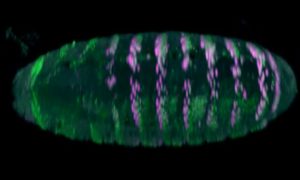
Researchers from EMBL Heidelberg have established an automated pipeline to create mutations in genomic enhancers, letting them watch evolution unfold before their eyes.
SCIENCE & TECHNOLOGY2020
sciencescience-technology
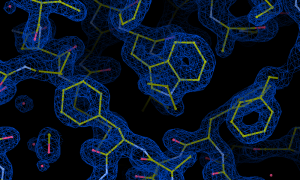
A group of scientists led by EMBL Hamburg’s Christian Löw provide insights into the molecular structure of proteins involved in the gliding movements through which the parasites causing malaria and toxoplasmosis invade human cells.
SCIENCE & TECHNOLOGY2020
sciencescience-technology

On 9 October, EMBL and the Spanish National Research Council (CSIC) signed a Memorandum of Understanding that paves the way for stronger collaboration between these two leading research institutions.
CONNECTIONSLAB MATTERS2020
connectionslab-matters
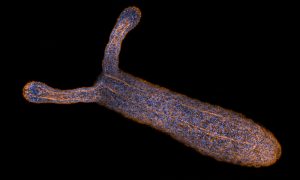
Sea anemones are amazing creatures. Despite their plant-like appearance and their tendency to remain fixed in one spot, they are actually animals.
SCIENCE & TECHNOLOGY2020
picture-of-the-weekscience-technology
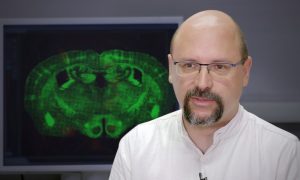
Research facilities play a crucial role in the advancement of science by supporting scientists with specialised expertise and state-of-the-art equipment. The Microscopy Facility at EMBL Rome exemplifies this role by making a wide variety of light microscopy technologies available to its researchers…
LAB MATTERSSCIENCE & TECHNOLOGY2020
lab-mattersscience-technology
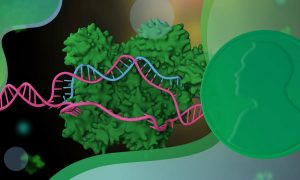
The genome editing tool CRISPR–Cas9 – which plays a critical role in EMBL’s research – was recognised by the Nobel Prize in Chemistry.
SCIENCE & TECHNOLOGY2020
sciencescience-technology
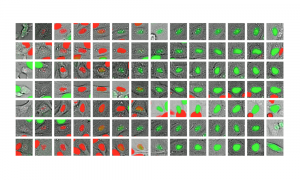
Members of an EMBL-led research group with collaborators in Estonia and Russia have built and trained a deep learning model to better understand how cells grow and divide.
SCIENCE & TECHNOLOGY2020
sciencescience-technology
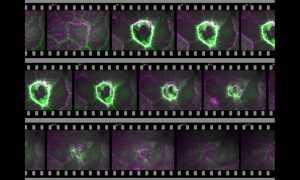
We’ve all had wounds at certain times in our lives. But they heal due to the self-repairing mechanisms in the body.
SCIENCE & TECHNOLOGY2020
picture-of-the-weekscience-technology
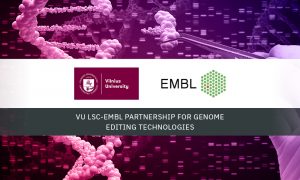
On 8 September, EMBL and Vilnius University Life Sciences Center signed a framework agreement for the establishment of the VU LSC–EMBL Partnership for Genome Editing Technologies.
CONNECTIONSLAB MATTERS2020
connectionslab-matters

EMBL’s network of alumni plays a vital role in advancing the life sciences globally. EMBL provides research, services, and infrastructure that help former staff to do this effectively. For several years EMBL has been discovering more avenues to help the life sciences across Europe. A key part of…
CONNECTIONS2020
connectionsevents
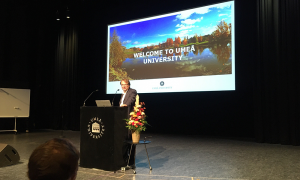
The partnership between EMBL and four Nordic research institutions aims to stimulate scientific exchange and inspire scientific collaborations. This year’s conference of the Nordic EMBL Partnership for Molecular Medicine included many talks by EMBL researchers and a presentation by EMBL’s…
CONNECTIONS2020
connectionsevents

To study the effect of commonly used drugs on bacterial envelopes, EMBL scientists applied a biochemical assay using a colour reaction. The deeper the red, the stronger the disruptive effect of the drug.
SCIENCE & TECHNOLOGY2020
picture-of-the-weekscience-technology

EMBL’s 21st Science and Society Conference will address scientific and societal responses to mass extinctions. Ahead of his keynote speech, renowned palaeontologist Mike Benton explains how looking into the deep past can give us vital insights into the future of life on Earth.
SCIENCE & TECHNOLOGY2020
eventsscience-technology
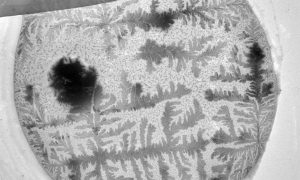
How does your crystal garden grow? EMBL's Electron Microscopy Core Facility was able to capture this garden of blooming crystals as they studied mosquito reproductive cells.
SCIENCE & TECHNOLOGY2020
picture-of-the-weekscience-technology
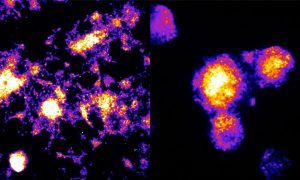
The internal clock that governs the development of embryos ticks slower for humans than for mice. Differences in the speed of biochemical reactions underlie the differences between species in the tempo of development.
SCIENCE & TECHNOLOGY2020
sciencescience-technology
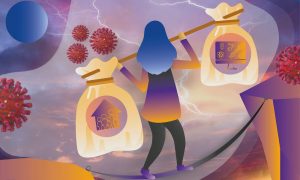
The EMBL conference that explored direct and indirect impacts from the current pandemic on women in science allowed for information and story sharing both in the form of lectures but also via online platforms like Slack and social media that included Twitter.
LAB MATTERS2020
eventslab-matters
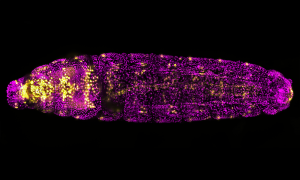
Not just another pretty fruit fly. This magenta and golden drosophila larva is lit up with a fluorescent molecule to help researchers study heart formation.
SCIENCE & TECHNOLOGY2020
picture-of-the-weekscience-technology
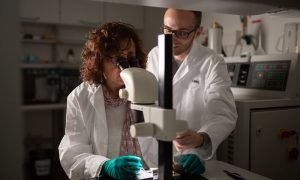
ARISE fellowships to offer first-ever comprehensive training for bioscience infrastructure operations
LAB MATTERS2020
lab-matters
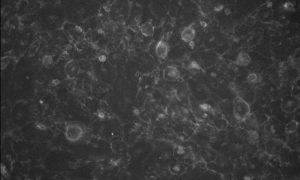
Researchers have found the cause of dilated cardiomyopathy – a leading cause of heart failure – and identified a potential treatment for it: a drug already used to treat acne.
SCIENCE & TECHNOLOGY2020
sciencescience-technology
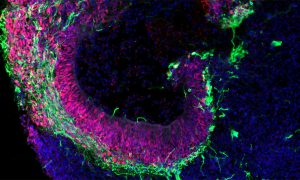
A decadal roadmap points the way to cell-based medicine for Europe
LAB MATTERSSCIENCE & TECHNOLOGY2020
lab-mattersscience-technology
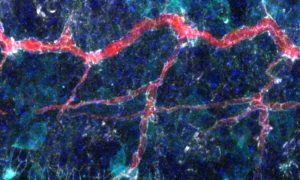
While this may seem like a nebula made up of interstellar clouds of dust and ionised gases, this image isn’t of a galaxy beyond the Milky Way.
SCIENCE & TECHNOLOGY2020
picture-of-the-weekscience-technology
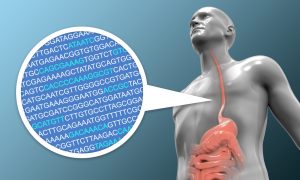
The Gerstung Group at EMBL-EBI and collaborators have developed a statistical model that analyses genomic data to predict whether a patient has a high or low risk of developing oesophageal cancer.
SCIENCE & TECHNOLOGY2020
sciencescience-technology
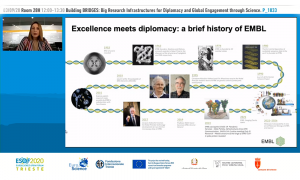
Two EMBL speakers gave presentations that looked toward the future and at ways to trailblaze on the endless frontier of science.
CONNECTIONSLAB MATTERS2020
connectionslab-matters

Erin Tranfield recently joined the EMBL Alumni Association Board as one of 15 newly elected members. Here, she talks about her new role on the board and reflects on how a life-changing event made her refocus her perspective on work and life.
PEOPLE & PERSPECTIVES2020
alumnipeople-perspectives

Maria Bernabeu and Wojciech Galej have each been awarded €1.5 million to research malaria and pre-mRNA splicing, respectively.
EMBL ANNOUNCEMENTSLAB MATTERS2020
embl-announcementslab-matters
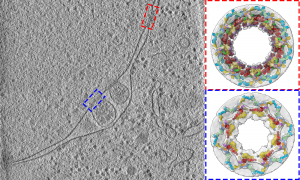
Scientists from the Beck group have studied the 3D structure of nuclear pores in budding yeast. They show how the architecture of the nuclear pore complex differs inside cells compared to its form observed in vitro studies.
SCIENCE & TECHNOLOGY2020
sciencescience-technology
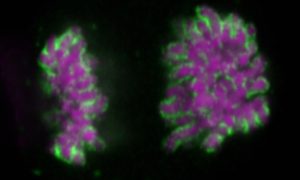
Researchers have uncovered how cells remove unwanted components from the nucleus following mitosis.
SCIENCE & TECHNOLOGY2020
sciencescience-technology
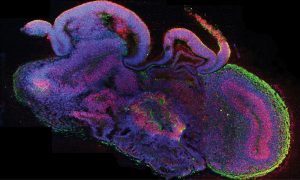
EMBL-EBI is one of the eight European institutes involved in the Humanoid Cell Atlas initiative, a new open-access platform that combines single-cell profiling and organoid technology
EMBL ANNOUNCEMENTSLAB MATTERS2020
embl-announcementslab-matters
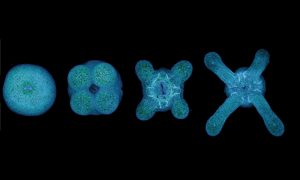
An international group of researchers, led by scientists from EMBL Heidelberg, have discovered that the number of tentacle arms a sea anemone grows depends on the amount of food it eats.
SCIENCE & TECHNOLOGY2020
sciencescience-technology

As the EMBL Fellows' Career Service program reaches a milestone, it reflects on its first year and looks forward to ways to improve its offerings to EMBL postdocs and predocs.
EMBL ANNOUNCEMENTSLAB MATTERS2020
embl-announcementslab-matters
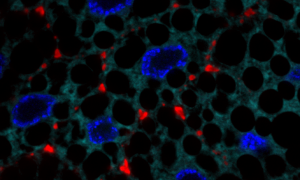
Those heart-shaped cells aren't just for show. They help tell the story of two proteins working together
SCIENCE & TECHNOLOGY2020
picture-of-the-weekscience-technology
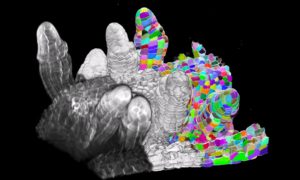
Starting with computer code and moving on to a more user-friendly graphical interface called PlantSeg, the Kreshuk Group at EMBL and collaborators built a simple open-access method to provide the most accurate and versatile analysis of plant tissue development to date.
SCIENCE & TECHNOLOGY2020
sciencescience-technology

The Head of the Electron Microscopy Core Facility at EMBL Heidelberg receives Mid-Career Scientific Achievement Award 2020
LAB MATTERSPEOPLE & PERSPECTIVES2020
lab-matterspeople-perspectives

More than 500 people have registered for an EMBL conference, "The impact of the COVID-19 crisis on women in science: Challenges and solutions." Scheduled for 9 September, the conference is free and open to all. Pre-registration is still available and required to attend.
SCIENCE & TECHNOLOGY2020
eventsscience-technology
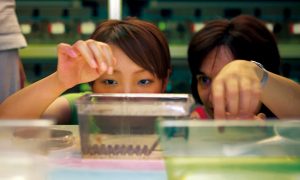
The EMBL International PhD Programme is one of EMBL’s flagship training programmes. It forms part of our efforts to train and inspire talented scientists to become skilled and creative future leaders. Submission of applications for the current PhD student recruitment round is now possible.
EMBL ANNOUNCEMENTSLAB MATTERS2020
embl-announcementslab-matters
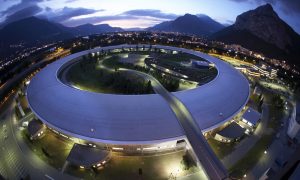
The beamlines run jointly by EMBL Grenoble and the ESRF reopen today, unveiling significant upgrades that exploit the brand new fourth generation ESRF synchrotron source.
EMBL ANNOUNCEMENTS2020
embl-announcementsscience
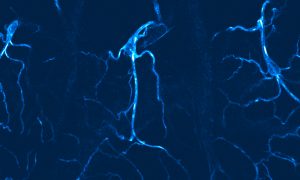
Beautiful flashes of blue colour help light the way for researchers to study cells in fruit fly larva that provide oxygen to tissues.
SCIENCE & TECHNOLOGY2020
picture-of-the-weekscience-technology

The new team leader offering services in electron microscopy discusses his hopes and plans for the forthcoming EMBL Imaging Centre
LAB MATTERSPEOPLE & PERSPECTIVES2020
lab-matterspeople-perspectives

The Web Development team provides a central source of web design and development for EMBL’s European Bioinformatics Institute (EMBL-EBI). In July, Geetika Malhotra joined the team as their new Head.
LAB MATTERSPEOPLE & PERSPECTIVES2020
lab-matterspeople-perspectives
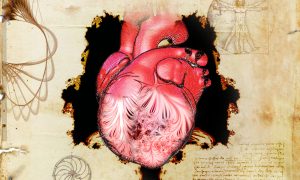
An international team of scientists involving Ewan Birney's group has investigated the function of a complex mesh of muscle fibres that line the inner surface of the heart.
SCIENCE & TECHNOLOGY2020
sciencescience-technology

Discoveries at EMBL will help researchers to interpret one of the most common types of experiments in genomics and medical studies.
SCIENCE & TECHNOLOGY2020
sciencescience-technology
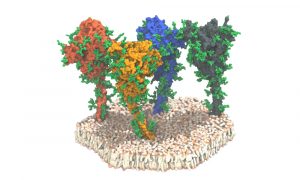
Researchers studied the spike protein on the surface of the SARS-CoV-2 virus. With its spikes, the virus binds to human cells and infects them. The study gave surprising insights into the spike protein, including an unexpected freedom of movement and a protective coat to hide it from antibodies.
SCIENCE & TECHNOLOGY2020
sciencescience-technology
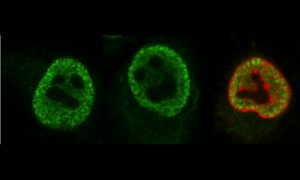
Despite their ghostly appearance, these are very real cell nuclei infected with Influenza A virus – the only influenza virus known to cause pandemics.
SCIENCE & TECHNOLOGY2020
picture-of-the-weekscience-technology
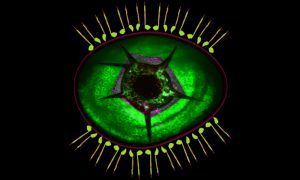
This image is a composite of lateral pentascolopidial organs, a wing imaginal disc pouch, and an epithelial wound in a Drosophila larva. The organs are arranged here like eyelashes. Cells surrounding an epidermal wound appear as the iris and pupil of this artistic eye.
SCIENCE & TECHNOLOGY2020
picture-of-the-weekscience-technology

As he enters retirement, Head of EMBL Rome Phil Avner reflects on his scientific career and memories from his time as Head of EMBL’s site in Italy
LAB MATTERSPEOPLE & PERSPECTIVES2020
lab-matterspeople-perspectives
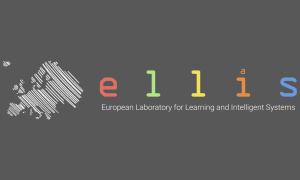
Researchers from all life science disciplines – from fundamental biological research to medical applications – generate immense datasets. Analysing these datasets and gaining new knowledge from them is a growing challenge for scientists. The fields of artificial intelligence (AI) and machine…
LAB MATTERSSCIENCE & TECHNOLOGY2020
lab-mattersscience-technology

A global team of researchers including the Flicek Team at EMBL-EBI has partnered up with the Māori tribe Ngātiwai to sequence the genome of the tuatara, a rare reptile endemic to New Zealand.
SCIENCE & TECHNOLOGY2020
sciencescience-technology
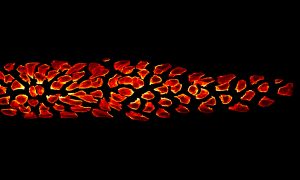
This group of cells represents an interesting example of organ formation where cells simultaneously move and change their shapes in a highly coordinated manner.
SCIENCE & TECHNOLOGY2020
picture-of-the-weekscience-technology
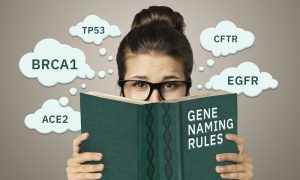
The human genome harbours about 19 000 protein-coding genes, many of which still have no known function. As scientists unveil the secrets of our DNA, they come across novel genes that they need to refer to using a unique name. The Human Genome Organisation’s Gene Nomenclature Committee (HGNC) at…
SCIENCE & TECHNOLOGY2020
sciencescience-technology
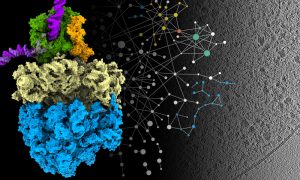
A new approach that allows researchers to see molecular machinery at work inside cells has offered a deeper understanding of how bacteria produce proteins and a unique glimpse into how they respond to antibiotics.
SCIENCE & TECHNOLOGY2020
sciencescience-technology

Europe PMC has begun indexing full-text COVID-19 preprints along with the associated data. The project aims to accelerate research to fight the SARS-CoV-2 virus.
SCIENCE & TECHNOLOGY2020
sciencescience-technology

The Svergun group at EMBL Hamburg has released the course ‘Solution Scattering from Biological Macromolecules’ in an online format for the first time. The course explores different aspects of small-angle X-ray scattering (SAXS) for studying the structure of macromolecules.
EMBL ANNOUNCEMENTS2020
embl-announcementsevents
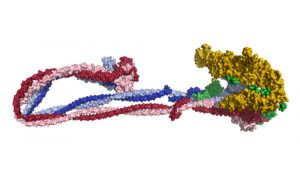
EMBL scientists and collaborators help reveal the process by which enormous quantities of DNA are folded into cells.
SCIENCE & TECHNOLOGY2020
sciencescience-technology
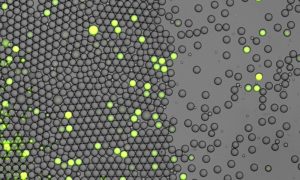
Bacterial cells are embedded in microfluidic droplets in oil. The fluorescence indicates the presence of the targeted DNA strain with the help of a characteristic DNA sequence.
SCIENCE & TECHNOLOGY2020
picture-of-the-weekscience-technology
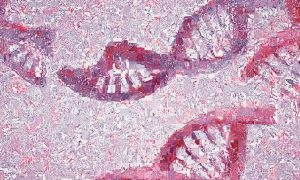
Researchers have developed an artificial intelligence algorithm that uses computer vision to analyse tissue samples from cancer patients. The algorithm can distinguish between healthy and cancerous tissues, and can also identify patterns DNA and RNA changes in tumours.
SCIENCE & TECHNOLOGY2020
sciencescience-technology

The image shows one of the four rows of roof lights above the atrium, which is the main public space of the Imaging Centre.
SCIENCE & TECHNOLOGY2020
picture-of-the-weekscience-technology
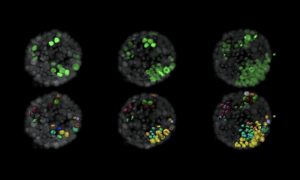
EMBL scientists have created a new, realistic 3D testbed that could help achieve the goal of stopping cancers before they start by studying cancer cells as they first form.
SCIENCE & TECHNOLOGY2020
sciencescience-technology
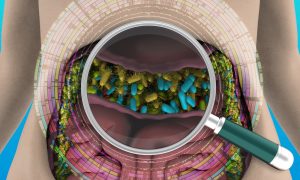
An international team of scientists has collated all known bacterial genomes from the human gut microbiome into a single large database. Their work will allow researchers to explore the links between bacterial genes and proteins, and their effects on human health.
SCIENCE & TECHNOLOGY2020
sciencescience-technology
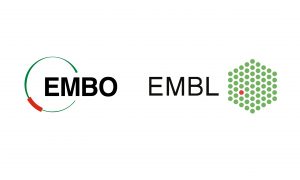
EMBL Director General Edith Heard and EMBO Director Maria Leptin respond to the current proposal on the Multiannual Financial Framework.
LAB MATTERSPEOPLE & PERSPECTIVES2020
lab-matterspeople-perspectives

European collaboration receives funding to explore risks and impact of future infectious disease outbreaks.
LAB MATTERS2020
lab-matters

Three changes in senior staff positions have been confirmed at EMBL today. Jessica Vamathevan becomes Head of Strategy, Jan Korbel becomes Head of Data Science for EMBL Heidelberg, and Nassos Typas becomes Senior Scientist.
EMBL ANNOUNCEMENTSLAB MATTERS2020
embl-announcementslab-matters
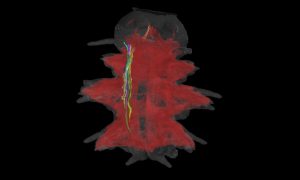
The image shows a larva of Platynereis dumerilii, a marine worm. The image here was produced by Constantin Pape, a visiting predoctoral fellow in the Kreshuk group at EMBL Heidelberg.
SCIENCE & TECHNOLOGY2020
picture-of-the-weekscience-technology

The European Learning Laboratory for the Life Sciences (ELLS), EMBL’s education facility, invites secondary school science teachers to participate in a virtual training course this autumn entitled ‘Introducing your microbiome’.
LAB MATTERS2020
lab-matters

Latvia has joined EMBL as a prospect member, starting a three-year process toward full membership.
EMBL ANNOUNCEMENTSLAB MATTERS2020
embl-announcementslab-matters
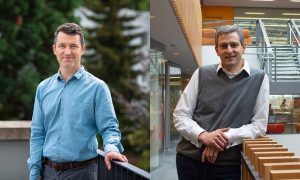
This year, EMBO elected 63 new members, including Alexander Aulehla, Group Leader and Senior Scientist at EMBL Heidelberg, and Paul Flicek, Associate Director of EMBL-EBI Services, Senior Scientist, Group and Team Leader at EMBL-EBI.
EMBL ANNOUNCEMENTSLAB MATTERS2020
embl-announcementslab-matters

The CrystalDirect® technology, combined with the web-based CRIMS software enable a fully automated, remote-controlled protein-to-structure pipeline.
LAB MATTERS2020
lab-matters
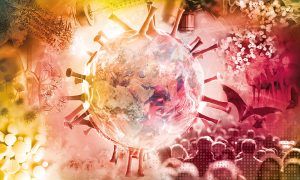
The virtual EMBL Conference ‘SARS-CoV-2: Towards a New Era in Infection Research’ explored the importance of fundamental research, collaboration, and data science in containing the SARS-CoV-2 pandemic, and discussed opportunities to improve our response to pandemics in the future.
SCIENCE & TECHNOLOGY2020
eventsscience-technology

EMBL brings together more than 1700 people from all over the world, from a variety of academic and cultural backgrounds. This creates an environment in which there is constant exchange of both scientific knowledge and cultural heritage. While it seems obvious that EMBL, as an international…
LAB MATTERS2020
lab-matterspicture-of-the-week
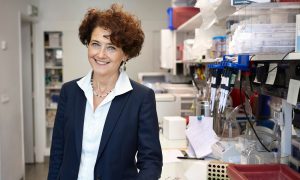
EMBL Director General Edith Heard has been elected a senator of the Max Planck Society, one of Germany’s leading scientific research organisations. She joins the Senate along with Nobel Laureates and EMBL alumni Christiane Nüsslein-Volhard and Stefan W. Hell, as well as nine additional new…
EMBL ANNOUNCEMENTSLAB MATTERS2020
embl-announcementslab-matters
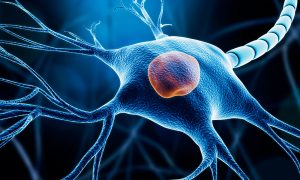
Scientists at EMBL Heidelberg have investigated stem cells and how they differentiate to become neurons. Their approach included an assessment of the complex interplay of molecules during the differentiation process and generated fundamental new insights into the role of a protein called Sox2 in…
SCIENCE & TECHNOLOGY2020
sciencescience-technology

The governing Council of EMBL has approved Director General Edith Heard’s restructure of senior management with effect from 1 July 2020.
EMBL ANNOUNCEMENTSLAB MATTERS2020
embl-announcementslab-matters
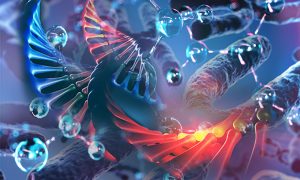
A study conducted by the Hackett group at EMBL Rome has identified key factors controlling the complex system of gene regulation during early embryo development, shedding new light on the mechanisms behind these events and on their evolutionary implications. Their findings are published in Nature…
SCIENCE & TECHNOLOGY2020
sciencescience-technology

Open Targets welcomes new Informatics Science Director
LAB MATTERSPEOPLE & PERSPECTIVES2020
lab-matterspeople-perspectives
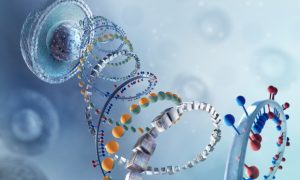
A national consortium including EMBL and the DKFZ is set to launch the German Human Genome–Phenome Archive, creating an invaluable bridge between fundamental biomedical research and applied healthcare.
CONNECTIONSLAB MATTERS2020
connectionslab-matters
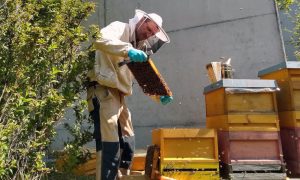
Local beekeeper Jörg Staffel has set up three bee colonies on the grass slope in front of the ATC building.
LAB MATTERS2020
lab-matterspicture-of-the-week
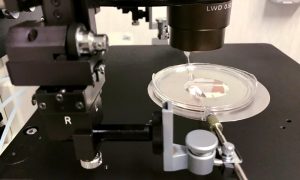
To study how SARS-CoV-2 infects cells, the Gene Editing and Embryology Facility (GEEF) at EMBL Rome will generate mice that express a human version of a protein called ACE2. The mouse line will be shared with preclinical research collaborators carrying out vaccine and antibody trials, and with the…
SCIENCE & TECHNOLOGY2020
sciencescience-technology
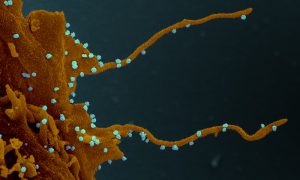
Researchers evaluate how the new coronavirus rewires human proteins for its own replication, and identify several antiviral drugs ready for clinical trials
SCIENCE & TECHNOLOGY2020
sciencescience-technology
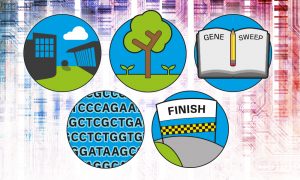
Today we celebrate the 20th anniversary of the first draft of the entire human genome.
SCIENCE & TECHNOLOGY2020
sciencescience-technology
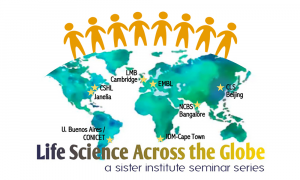
EMBL is joining the virtual seminar series ‘Life Science Across the Globe’ – a timely initiative to foster international scientific exchange across countries and continents, starting on 1 July.
LAB MATTERS2020
lab-matters
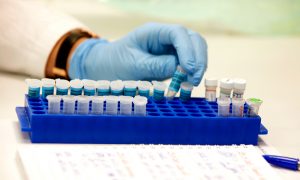
EMBL scientists develop a new molecular tool to prevent SARS-CoV-2 infection in mice. This tool is able to cause targeted epigenetic modifications of specific genes in specific cell populations. They will use it in mice to target airway cells that express the ACE2 protein – the receptor that…
SCIENCE & TECHNOLOGY2020
sciencescience-technology
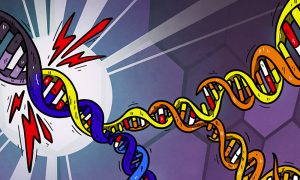
DNA damage caused by chemical mutagens is not repaired immediately and can create more genetic diversity in tumours.
SCIENCE & TECHNOLOGY2020
sciencescience-technology

EMBL is striving to make its labs and offices a welcoming and inclusive environment for all. To achieve this goal, EMBL's Equality and Diversity Officers, Luisa Vieites Rodrigues and Zac O'Sullivan, are working closely with leadership and the EMBL community. In this interview, they share their…
LAB MATTERS2020
lab-matters

Elisa Kreibich from EMBL’s Krebs group baked an EMBL cake for the farewell of Alexandra Martitz, the first master student in their lab.
LAB MATTERS2020
lab-matterspicture-of-the-week
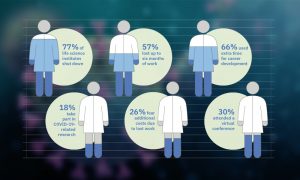
Jan Korbel and Oliver Stegle have performed a survey of fellow life scientists to learn how the current crisis, with partial or complete institutional shutdowns, is affecting their work.
LAB MATTERSSCIENCE & TECHNOLOGY2020
lab-mattersscience-technology
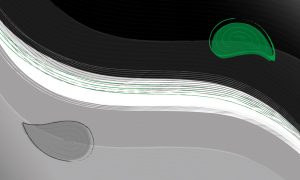
To explore the origins of gender imbalances in academia and possible ways of overcoming them, international experts will meet for the virtual EMBL | EMBO | HHMI conference ‘Gender Roles and their Impact in Academia’ from 13–15 Oct 2020. The conference’s outcomes will be integrated into a…
EMBL ANNOUNCEMENTS2020
embl-announcementsevents
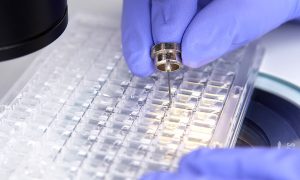
While global research on coronaviruses has shed light on the function of many SARS-CoV-2 proteins, the role of some crucial components remains unknown. Researchers at EMBL Grenoble will use a range of structural biology methods to try to solve some of the puzzles of the molecular mechanics of…
SCIENCE & TECHNOLOGY2020
sciencescience-technology
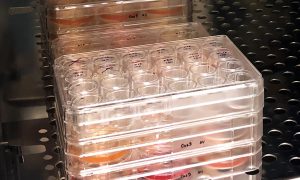
Scientists at EMBL and Heidelberg University Hospital are studying how the novel coronavirus behaves in the gut to try to better understand its epidemiology and prevent its spread. To do this, they are combining advanced imaging and sequencing technologies to study coronavirus in human intestinal…
SCIENCE & TECHNOLOGY2020
sciencescience-technology

In this composite image, visual artist Mona Kakanj assembled three different biological structures in fly larvae into a flower. The original images were taken as part of a research project by Parisa Kakanj in Maria Leptin’s group.
SCIENCE & TECHNOLOGY2020
picture-of-the-weekscience-technology

The European Molecular Biology Laboratory has secured 6.8 million Euros funding from the European Commission to launch a unique training programme. The ARISE Programme will train and develop Europe’s next generation leadership for research infrastructures in the life sciences.
LAB MATTERS2020
lab-matters
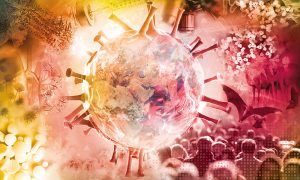
The emergence of previously unknown pathogens, such as the novel coronavirus SARS-CoV-2, raises many questions. To explore these questions in an international scientific forum, EMBL will host the virtual conference ‘SARS-CoV-2: Towards a New Era in Infection Research’ on 3 July. Invited…
EMBL ANNOUNCEMENTS2020
embl-announcementsevents
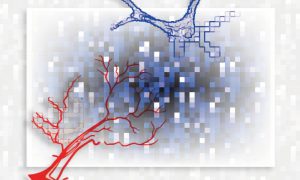
Scientists discovered that antihypertensive agent alters the tissue characteristics of colon cancer metastases. This "stiffness" of metastases has an effect on the therapeutic success.
SCIENCE & TECHNOLOGY2020
sciencescience-technology
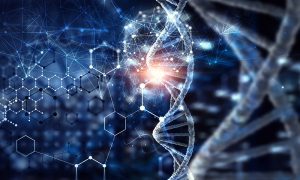
Scientists at EMBL Rome unveil the mechanism behind the most studied epigenetic modification.
SCIENCE & TECHNOLOGY2020
sciencescience-technology
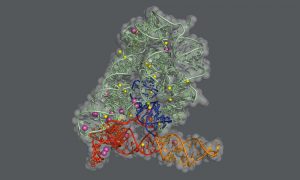
Researchers in the Marcia group at EMBL Grenoble and the De Vivo lab at the Italian Institute of Technology in Genoa have obtained some of the most detailed ever snapshots of the splicing process in systems known as group II self-splicing introns. The new insights will help scientists to develop…
SCIENCE & TECHNOLOGY2020
sciencescience-technology
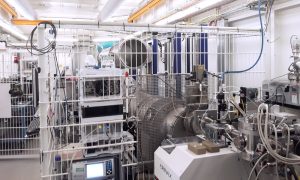
EMBL researchers are studying COVID-19-related molecules by exposing them to high-brilliance X-ray beams. The Svergun group at EMBL Hamburg is using biological small-angle X-ray scattering (SAXS) as part of a global effort by scientists to elucidate the structural organisation of SARS-CoV-2…
SCIENCE & TECHNOLOGY2020
sciencescience-technology
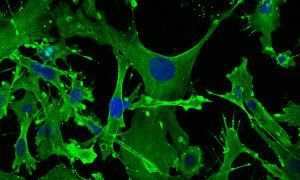
This image shows mouse embryonic fibroblasts (MEFs), their cell skeletons (green) and nuclei (blue) under a confocal microscope, photographed by Julia Hansen in the lab of Matthieu Boulard at EMBL Rome.
SCIENCE & TECHNOLOGY2020
picture-of-the-weekscience-technology
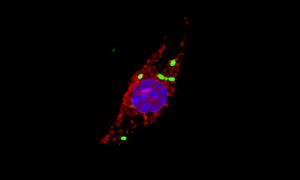
Scientists including members of EMBL’s Typas group have investigated how immune cells called macrophages respond to infection by the intracellular pathogen Salmonella enterica. They discovered that Salmonella causes newly produced cathepsins to accumulate in the nuclei of infected cells to…
SCIENCE & TECHNOLOGY2020
sciencescience-technology
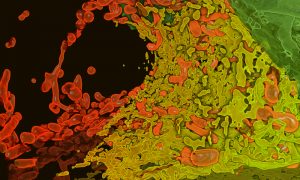
This image is a 3D-rendering of the automatic segmentation of a HeLa cell, made by Julian Hennies from the Schwab team at EMBL Heidelberg.
SCIENCE & TECHNOLOGY2020
picture-of-the-weekscience-technology
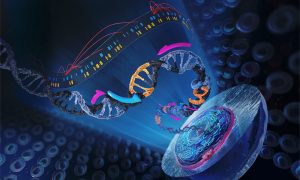
Scientists at EMBL Heidelberg have developed a new method, called Targeted Perturb-seq (TAP-seq), which increases the scale and precision of functional genomics CRISPR–Cas9 screens by orders of magnitude. Their method overcomes limitations in previous applications of single-cell RNA sequencing,…
SCIENCE & TECHNOLOGY2020
sciencescience-technology
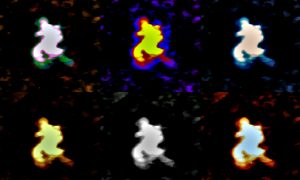
Researchers from EMBL Grenoble have developed a way to visualise large RNAs in 3D using biochemical and structural biology techniques.
SCIENCE & TECHNOLOGY2020
sciencescience-technology
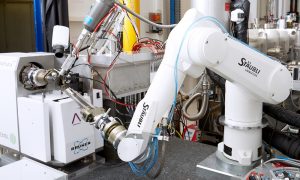
EMBL and the European Synchrotron Radiation Facility (ESRF) restart the activities of the Joint Structural Biology Group in Grenoble to support coronavirus-related projects. A new initiative will allow users to be granted access to the High-Throughput Crystallisation (HTX) lab at EMBL and to a…
CONNECTIONS2020
connectionsscience
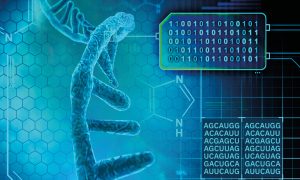
EMBL scientists have performed a large-scale analysis of over 4700 SARS-CoV-2 genome sequences. They found that many of the most interesting changes in the SARS-CoV-2 genome that have been reported so far are likely to be technical artefacts, rather than biological mutations.
SCIENCE & TECHNOLOGY2020
sciencescience-technology
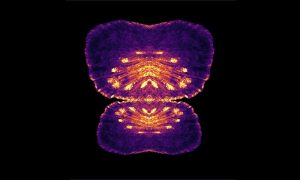
In the Leptin Group, Eva Hasel investigates the innate immune system in Japanese rice fish.
SCIENCE & TECHNOLOGY2020
picture-of-the-weekscience-technology
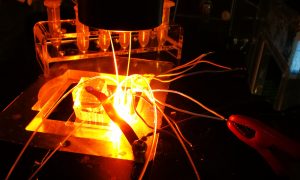
Scientists hope that a legacy of the novel coronavirus in recovered COVID-19 patients – antibodies in their blood – could lead to drugs to treat others. The Merten group at EMBL Heidelberg has pivoted its microfluidics platform to support the search for neutralising antibodies that could…
SCIENCE & TECHNOLOGY2020
sciencescience-technology

Researchers in EMBL’s Zaugg group have studied the causes of pulmonary arterial hypertension (PAH), a rare disease that causes high blood pressure in the arteries of the lungs. The study, carried out in collaboration with Stanford University School of Medicine, compared lung cells of patients…
SCIENCE & TECHNOLOGY2020
sciencescience-technology

The nervous system has fascinated Georgia Rapti ever since her first introduction to biology. Her research group in the Developmental Biology unit will focus on understanding the early biological events involved in the nervous system’s formation.
LAB MATTERSPEOPLE & PERSPECTIVES2020
lab-matterspeople-perspectives
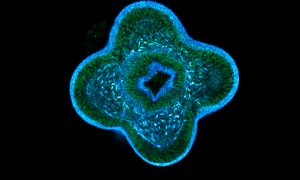
The image shown here, taken by Anniek Stokkermans from EMBL’s Ikmi Group, shows a larva of Nematostella vectensis.
SCIENCE & TECHNOLOGY2020
picture-of-the-weekscience-technology
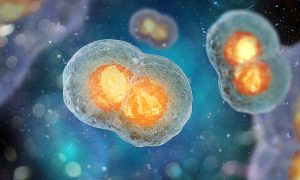
Researchers from the Sharpe group at EMBL Barcelona have published a method to track the developmental history of a cell using the gene editing tool CRISPR–Cas9, but without the need to create transgenic organisms.
SCIENCE & TECHNOLOGY2020
sciencescience-technology

EMBL welcomes NetApp, a leader in cloud data services empowering global organisations to change their world with data, as member of the Corporate Partnership Programme of the EMBL Advanced Training Centre.
CONNECTIONSLAB MATTERS2020
connectionslab-matters

EMBL scientists will contribute to the new German COVID-19 OMICS Initiative to study the biological mechanisms contributing to coronavirus infections. EMBL group leaders Jan Korbel and Oliver Stegle, who is also affiliated with the DKFZ Heidelberg, will coordinate the set-up of IT infrastructures…
SCIENCE & TECHNOLOGY2020
sciencescience-technology
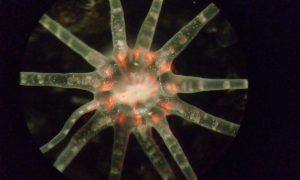
This image of the starlet sea anemone was taken by Petrus Steenbergen using a stereoscope.
SCIENCE & TECHNOLOGY2020
picture-of-the-weekscience-technology
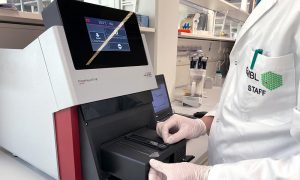
The Sample Preparation and Characterisation Facility (SPC) at EMBL Hamburg reopens to support scientists working on Covid-19 research. The SPC Facility is one of the best equipped facilities in Europe is therefore in high demand from external users. Re-opening the facility also allows experts at…
SCIENCE & TECHNOLOGY2020
sciencescience-technology
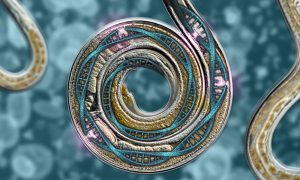
DNA mutations are caused by a combination of DNA damage and repair, shows study by EMBL-EBI and collaborators.
SCIENCE & TECHNOLOGY2020
sciencescience-technology

The image shown here, taken by Daniel Rios-Barrera from the Leptin Group shows the cells of the early wing tissue of the fly during larval development.
SCIENCE & TECHNOLOGY2020
picture-of-the-weekscience-technology
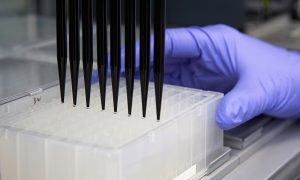
By re-opening the High-Throughput Crystallisation (HTX) lab at EMBL Grenoble, EMBL is supporting structural biology projects to respond to the health threats posed by coronaviruses.
SCIENCE & TECHNOLOGY2020
sciencescience-technology
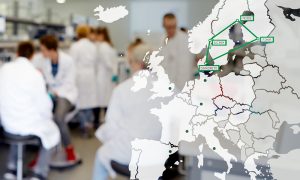
The Nordic EMBL Partnership for Molecular Medicine has been awarded 210,000 euros. The funds will be used to train the next generation of specialists and research leaders in molecular medicine in the Nordic countries.
CONNECTIONSLAB MATTERS2020
connectionslab-matters
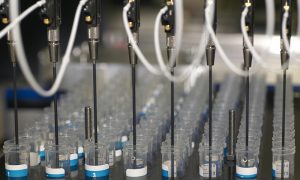
The Marquez Team has restarted operations at the High-Throughput Crystallisation (HTX) lab at EMBL Grenoble. The team has developed a fully automated protein-to-structure pipeline, which can be operated remotely and provides virtual access to the facilities.
SCIENCE & TECHNOLOGY2020
sciencescience-technology
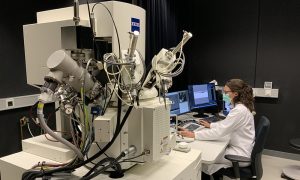
EMBL electron microscopy specialists collaborate with researchers from Heidelberg University Hospital to understand the changes occurring in cell structures upon SARS-CoV-2 infection.
SCIENCE & TECHNOLOGY2020
sciencescience-technology
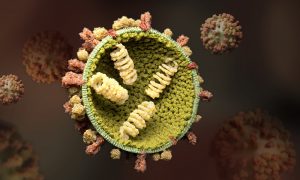
The infectious disease commonly known as flu is caused by the influenza virus. It spreads around the world in seasonal outbreaks, causing millions of infections and hundreds of thousands of deaths each year. Stephen Cusack, Head of EMBL Grenoble, has been studying different aspects of the influenza…
SCIENCE & TECHNOLOGY2020
sciencescience-technology
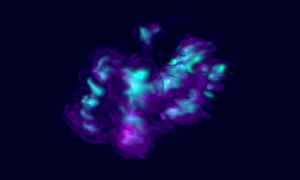
In human cells, the genetic material is packaged into 23 different DNA molecules, the chromosomes. Each chromosome is present in two copies, one inherited from the paternal sperm, and the other from the maternal egg. During most of the cell’s life, chromosomes take the shape of long,…
SCIENCE & TECHNOLOGY2020
picture-of-the-weekscience-technology
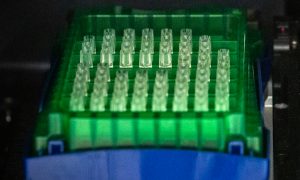
Scientists at EMBL Hamburg and Karolinska Institutet Stockholm aim to find synthetic antibodies – known as nanobodies – that bind a surface protein of the novel SARS-CoV-2 coronavirus. Nanobodies could prevent the virus from entering human cells and causing COVID-19.
SCIENCE & TECHNOLOGY2020
sciencescience-technology
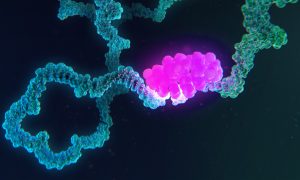
EMBL scientists working in the groups of Matthias Hentze and Wolfgang Huber have created RBPbase – a database of RNA-binding proteins – to assist the identification of proteins that interact with the SARS-CoV-2 RNA genome.
SCIENCE & TECHNOLOGY2020
sciencescience-technology

In March 2020, planes were grounded, streets went quiet, and our lives changed forever. But while the world came to a halt, many scientists were ramping up their efforts to understand the new virus.
SCIENCE & TECHNOLOGY2020
sciencescience-technology

The virtual EMBO | EMBL symposium ‘The Four-Dimensional Genome’ brought together 470 participants. Here, Jürgen Deka, Head of External Scientific Training, discusses how he and his team overcame the organisational challenges.
LAB MATTERS2020
eventslab-matters

To address global challenges, we need to better understand life in the context of environmental change, says EMBL Director General Edith Heard
EMBL ANNOUNCEMENTSLAB MATTERS2020
embl-announcementslab-matters

Brendan Rouse came to Heidelberg in March as EMBL’s Environmental Officer, tasked with monitoring the organisation’s environmental impact and promoting sustainable practices. Here, he discusses his plans for the new role.
LAB MATTERSPEOPLE & PERSPECTIVES2020
lab-matterspeople-perspectives
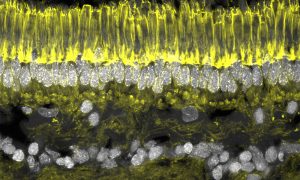
This Picture of the Week shows a stained cryosection of a retina – the light-sensitive part of the eye – of an ancient fish, the lamprey.
SCIENCE & TECHNOLOGY2020
picture-of-the-weekscience-technology
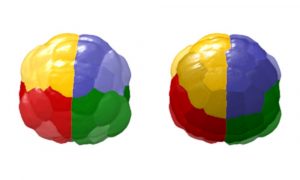
Researchers from EMBL Heidelberg have created a complete description of early embryo development, accounting for every single cell in the embryo.
SCIENCE & TECHNOLOGY2020
sciencescience-technology

The new collaborative space will help scientists, public health and healthcare professionals around the world to fight the coronavirus pandemic.
SCIENCE & TECHNOLOGY2020
sciencescience-technology
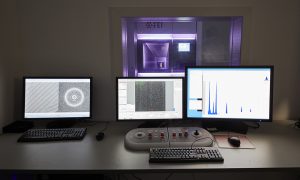
EMBL Heidelberg reopens the Cryo-Electron Microscopy Service Platform to support coronavirus structural biology research.
CONNECTIONS2020
connectionsscience
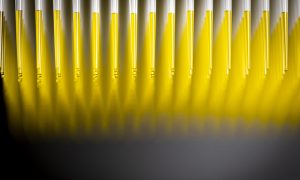
Scientists at EMBL Heidelberg are contributing their expertise in a community effort to develop large-scale testing methods for coronavirus. Their goal is to increase the capacity and speed of testing, which is crucial for containing the pandemic.
SCIENCE & TECHNOLOGY2020
sciencescience-technology
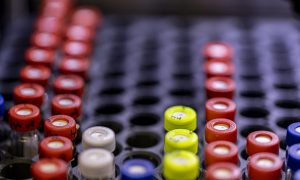
EMBL researchers are studying how drugs that have shown good results against COVID-19 work in living cells
SCIENCE & TECHNOLOGY2020
sciencescience-technology

The Protein Expression and Purification Core Facility at EMBL Heidelberg will produce proteins for several coronavirus-related research projects, to assist the development of new strategies to fight the virus.
SCIENCE & TECHNOLOGY2020
sciencescience-technology
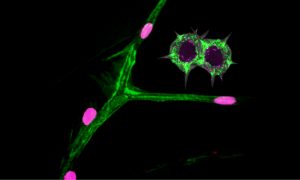
What may look like a branch of a tree with the first flower buds emerging after winter are, in fact, tracheal cells of a fruit fly larva and their nuclei.
SCIENCE & TECHNOLOGY2020
picture-of-the-weekscience-technology
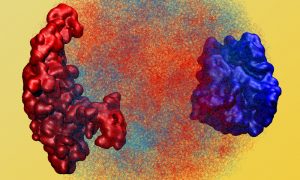
EMBL researchers in the Heard group at EMBL Heidelberg explore the interaction between DNA organisation and gene expression in the early embryo
SCIENCE & TECHNOLOGY2020
sciencescience-technology

EMBL Director General Edith Heard responds to the resignation of the President of the European Research Council (ERC)
EMBL ANNOUNCEMENTSLAB MATTERS2020
embl-announcementslab-matters
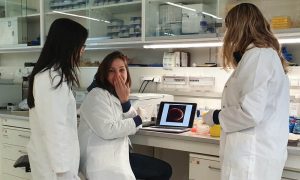
EMBL is all about exciting science, through which we aim to achieve a fundamental understanding of biological processes.
SCIENCE & TECHNOLOGY2020
picture-of-the-weekscience-technology
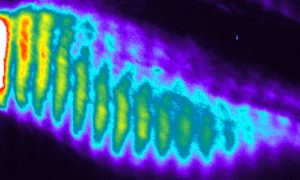
EMBL scientists examine the molecular causes of a rare hereditary disease of the spine and ribs
SCIENCE & TECHNOLOGY2020
sciencescience-technology
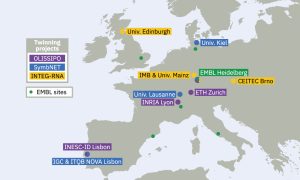
Three international teams involving EMBL Heidelberg have been granted funding from the European Commission for three Twinning projects with institutes in Portugal and the Czech Republic.
CONNECTIONSLAB MATTERS2020
connectionslab-matters

The causes of 40 percent of all cases of certain medulloblastoma – dangerous brain tumours affecting children – are hereditary. These are the findings of a recent genetic analysis carried out by scientists from EMBL and numerous colleagues around the world.
SCIENCE & TECHNOLOGY2020
sciencescience-technology

Bastian Drees is a biophysicist turned librarian, who joined EMBL in January as the new Head of Library. Here, he discusses the changing role of libraries and how they can help scientists organise and share their results.
LAB MATTERSPEOPLE & PERSPECTIVES2020
lab-matterspeople-perspectives
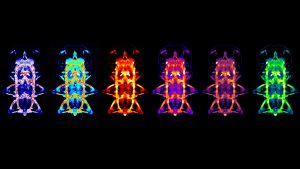
Paola Bertucci, from the Arendt Group at EMBL Heidelberg, studies the evolution of Platynereis dumerilii – a species of annelid polychaete worm.
SCIENCE & TECHNOLOGY2020
picture-of-the-weekscience-technology

EMBL-EBI set to launch European COVID-19 Data Platform to help store, share, and analyse research data linked to the COVID-19 pandemic.
SCIENCE & TECHNOLOGY2020
sciencescience-technology

EMBL is committed to providing a safe and healthy working environment for our staff and visitors.
EMBL ANNOUNCEMENTSLAB MATTERS2020
embl-announcementslab-matters

The iconic ATC – celebrating its 10 year anniversary this year – reflects the blue sky, the clouds and the rays of the Sun.
LAB MATTERS2020
lab-matterspicture-of-the-week

Stories from EMBL’s past are captured via the EMBL Archive’s Oral Histories programme
LAB MATTERS2020
lab-matters

Committee recognises outstanding contributions of EMBL alumni to science journalism and genome editing
EMBL ANNOUNCEMENTS2020
alumniembl-announcements
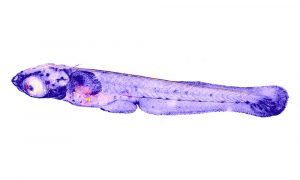
The medaka shown in this Picture of the Week was captured by Eva Hasel, a postdoc in the Leptin group at EMBL Heidelberg.
SCIENCE & TECHNOLOGY2020
picture-of-the-weekscience-technology
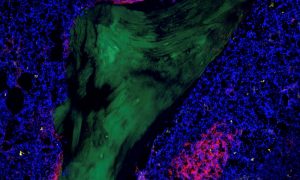
The Heidelberg-based LeukoSyStem consortium investigates leukaemia stem cells in acute myeloid leukaemia. The German Federal Ministry of Education and Research financially supports this collaboration between Heidelberg University Hospital, HI-STEM gGmbH, the German Cancer Research Center and EMBL.
EMBL ANNOUNCEMENTS2020
embl-announcementsscience

How Joana Moscoso bridges the gap between science and society
LAB MATTERS2020
eventslab-matters

This image, taken by Raphaël Cohen-Aberdam from the Cipriani team, shows that the weather for the Grenoble Lab Ski Day 2020 was just perfect!
LAB MATTERS2020
lab-matterspicture-of-the-week
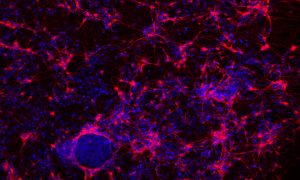
EMBL researchers investigate the role of a histone protein in regulating gene expression
SCIENCE & TECHNOLOGY2020
sciencescience-technology
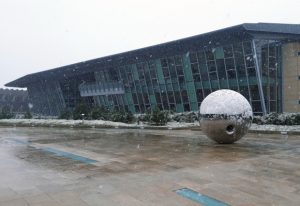
Colder winter weather has finally arrived EMBL-EBI. It’s the first time the site has seen snow this winter.
LAB MATTERS2020
lab-matterspicture-of-the-week
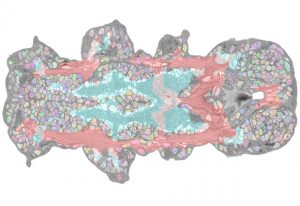
EMBL researchers combine multiple datasets to develop expandable atlas of an entire animal
SCIENCE & TECHNOLOGY2020
sciencescience-technology
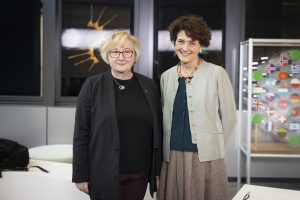
Theresia Bauer and EMBL discuss organisational developments and future strategies
CONNECTIONSLAB MATTERS2020
connectionslab-matters

Annual Reception celebrates EMBL’s achievements in 2019 and explores its way ahead
LAB MATTERS2020
eventslab-matters
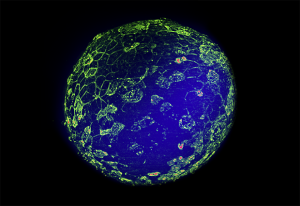
In the Trivedi Group at EMBL Barcelona, Krisztina Arató and Jia Le Lim study the early development of zebrafish embryos.
SCIENCE & TECHNOLOGY2020
picture-of-the-weekscience-technology

EMBL’s new Science and Society Manager shares her plans for fostering multidisciplinary dialogue
LAB MATTERSPEOPLE & PERSPECTIVES2020
lab-matterspeople-perspectives
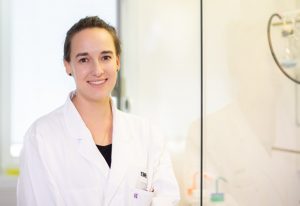
New group leader at EMBL Heidelberg employs synthetic chemistry to develop novel tools for biology
PEOPLE & PERSPECTIVES2020
people-perspectivesscience

2020 call now open for FNR funding of bilateral projects between EMBL and Luxembourg
CONNECTIONSLAB MATTERS2020
connectionslab-matters
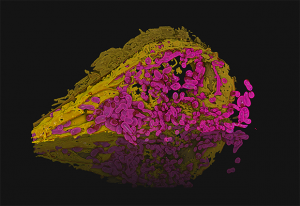
In this image, Julian Hennies from the Schwab Team has reconstructed the 3D structure of a human cell's organelles.
SCIENCE & TECHNOLOGY2020
picture-of-the-weekscience-technology
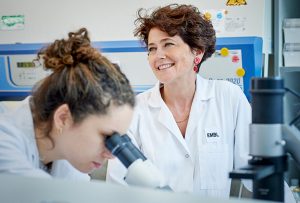
EMBL Director General recognised alongside four other exceptional women in the life sciences
EMBL ANNOUNCEMENTSLAB MATTERS2020
embl-announcementslab-matters
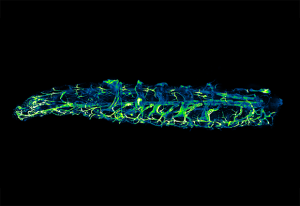
This image shows the tracheal system of a live fruit fly larva. Daniel Rios from the Leptin Group and Dimitri Kromm from the Hufnagel Group used this advanced microscope to investigate the dynamics of tracheal cells during development.
SCIENCE & TECHNOLOGY2020
picture-of-the-weekscience-technology
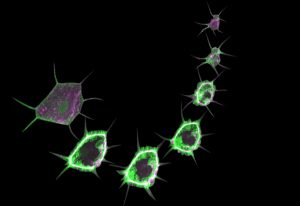
This technique provides a simple but effective way to study the functions of organs in living animals
SCIENCE & TECHNOLOGY2020
sciencescience-technology
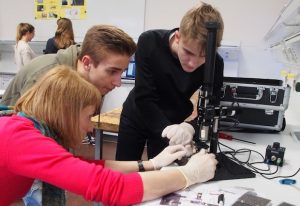
How EMBL’s ‘Microscope in Action’ introduces teenagers to the basics of fluorescence microscopy
LAB MATTERS2020
lab-matters
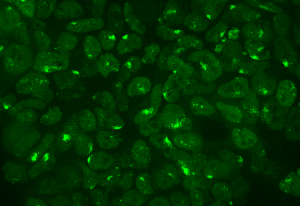
Scientists provide important new insights into the molecular basis of X-inactivation
SCIENCE & TECHNOLOGY2020
sciencescience-technology
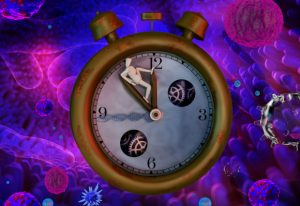
EMBL co-leads most comprehensive study of genetic causes of cancer
SCIENCE & TECHNOLOGY2020
sciencescience-technology

Cloud computing offers unprecedented opportunities for global-scale research collaborations. It also presents a unique set of challenges in terms of data protection and the ethics of data sharing.
SCIENCE & TECHNOLOGY2020
sciencescience-technology
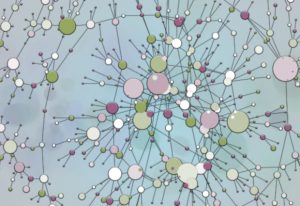
The largest and most comprehensive catalogue of cancer-specific RNA alterations reveals new insights into the cancer genome.
SCIENCE & TECHNOLOGY2020
sciencescience-technology
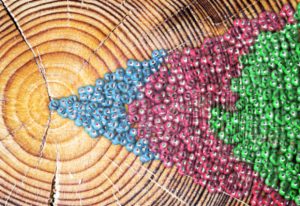
Researchers at EMBL’s European Bioinformatics Institute (EMBL-EBI) and the Francis Crick Institute have analysed the whole genomes of over 2600 tumours from 38 different cancer types to determine the chronology of genomic changes during cancer development.
SCIENCE & TECHNOLOGY2020
sciencescience-technology
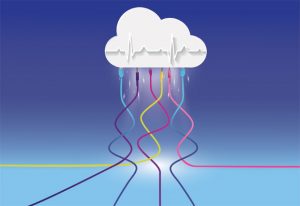
Scientists from EMBL present a tool for large-scale analysis of genomic data with cloud computing. Main advantages of the new tool, called Butler, are continuous system monitoring and its ability to self-heal in case of failure, allowing for 43% more efficient data processing than previous…
SCIENCE & TECHNOLOGY2020
sciencescience-technology
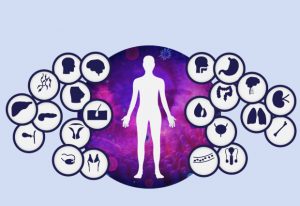
Using the dataset from the Pan-Cancer project, scientists has developed methods to group, classify, and describe large rearrangements of the genome that are a key driver of cancer.
SCIENCE & TECHNOLOGY2020
sciencescience-technology

Analysis of whole cancer genomes gives key insights into the role of the non-coding genome in cancer
SCIENCE & TECHNOLOGY2020
sciencescience-technology
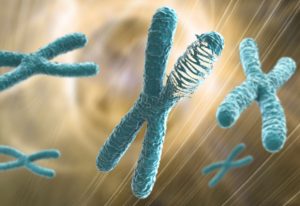
Researchers at Harvard Medical School and EMBL-EBI have carried out the largest analysis across cancer types of the newly discovered mutational phenomenon chromothripsis.
SCIENCE & TECHNOLOGY2020
sciencescience-technology

Using the data from the Pan-Cancer project EMBL scientists describe how our genetic background influences cancer development.
SCIENCE & TECHNOLOGY2020
sciencescience-technology
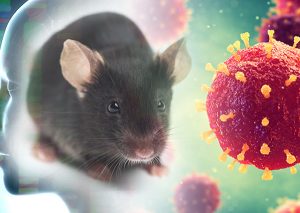
New resource that categorises genes essential for supporting life could be used to identify rare disease mutations
SCIENCE & TECHNOLOGY2020
sciencescience-technology
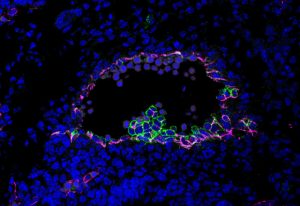
Morgan Oatley and her colleagues in Christophe Lancrin’s group investigated how haematopoietic stem cells emerge from the endothelium in developing mouse embryos.
SCIENCE & TECHNOLOGY2020
picture-of-the-weekscience-technology
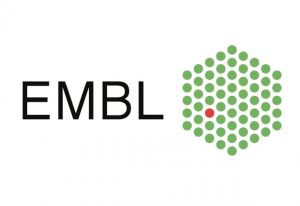
Today marks the next chapter in the UK’s relationship with Europe. While we wait to see what a future relationship brings, researchers will continue to work across borders to tackle society’s most pressing problems, such as climate change, ageing, and disease.
EMBL ANNOUNCEMENTSLAB MATTERS2020
embl-announcementslab-matters
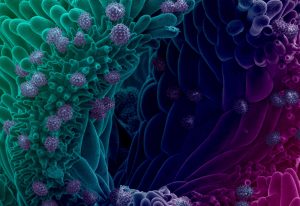
New grant will increase collaboration between imaging centres and fuel scientific discovery
EMBL ANNOUNCEMENTSLAB MATTERS2020
embl-announcementslab-matters
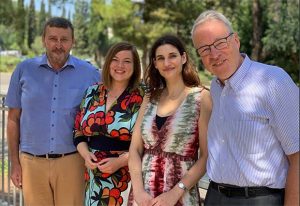
Strengthening ties between EMBL and Israel through the Scientific Visitor Programme
PEOPLE & PERSPECTIVES2020
people-perspectivesscience
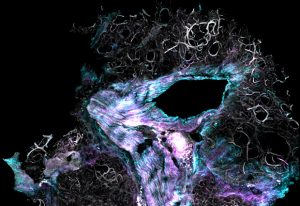
Muzamil Majid Khan, a postdoc in the Pepperkok team at EMBL Heidelberg, studied the piece of tissue visible in this image.
SCIENCE & TECHNOLOGY2020
picture-of-the-weekscience-technology

New group leader at EMBL Barcelona is investigating how malaria affects the human circulatory system
PEOPLE & PERSPECTIVES2020
people-perspectivesscience
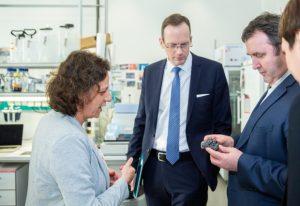
László Palkovics, Hungarian Minister for Innovation and Technology, visited EMBL Heidelberg
CONNECTIONS2020
connectionsevents
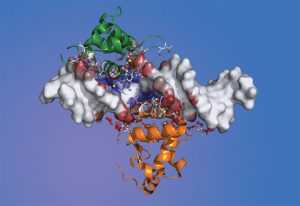
EMBL researchers have developed a method to observe interactions between transcription factors
SCIENCE & TECHNOLOGY2020
sciencescience-technology
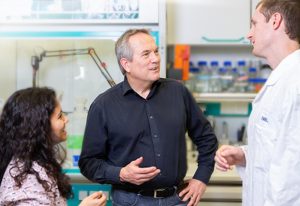
EMBL Director honoured by the international RNA Society
EMBL ANNOUNCEMENTS2020
embl-announcementsevents

The new EMBL spinoff company Araxa Biosciences GmbH aims to set new standards for the development of antibody-based therapeutics and diagnostics
LAB MATTERSSCIENCE & TECHNOLOGY2020
lab-mattersscience-technology

Dame Janet Thornton presents the 2019 EMBL Insight Lecture: Ageing and disease – what is the link?
SCIENCE & TECHNOLOGY2020
eventsscience-technology

Kristina Haase brings an engineer’s perspective to vascular disease and regenerative medicine
PEOPLE & PERSPECTIVES2020
people-perspectivesscience

Judith Reichmann will receive this year’s Paul Ehrlich and Ludwig Darmstaedter Prize for Young Researchers
EMBL ANNOUNCEMENTSLAB MATTERS2020
embl-announcementslab-matters
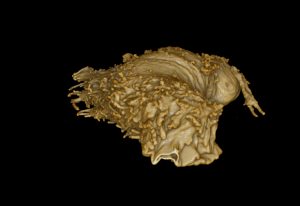
The image shown here is a 3D-rendering created by Julian Hennies from the Schwab team.
SCIENCE & TECHNOLOGY2020
picture-of-the-weekscience-technology
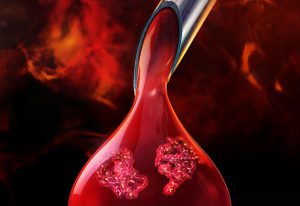
EMBL scientists identify drug targets in blood and organs
SCIENCE & TECHNOLOGY2020
sciencescience-technology

The latest issue of the free magazine, Science in School, is now available for teachers worldwide.
EMBL ANNOUNCEMENTSLAB MATTERS2020
embl-announcementslab-matters

The call for applications for Bridging Excellence Fellowships is now open
EMBL ANNOUNCEMENTSLAB MATTERS2020
embl-announcementslab-matters
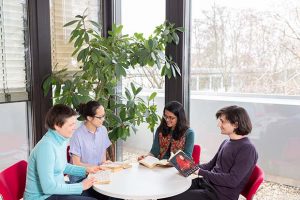
The club provides a social outlet for EMBLers with a social conscience
LAB MATTERS2020
eventslab-matters

This image has been composed from thousands of individual super-resolution microscopy images. It was created by Markus Mund in the Ries Group.
SCIENCE & TECHNOLOGY2020
picture-of-the-weekscience-technology
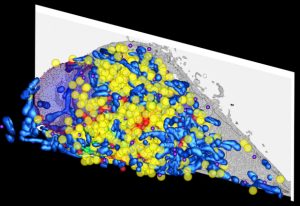
What might also be an artistic representation of a scattered bowl of Skittles is actually a 3D reconstruction of a high-pressure frozen HeLa cell.
SCIENCE & TECHNOLOGY2020
picture-of-the-weekscience-technology
No matching posts found